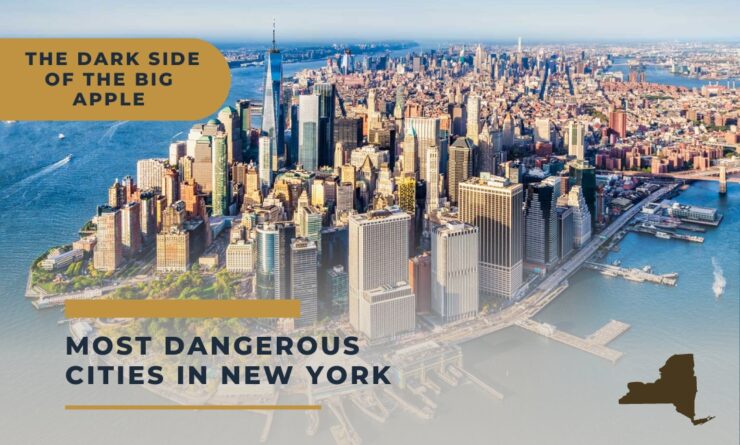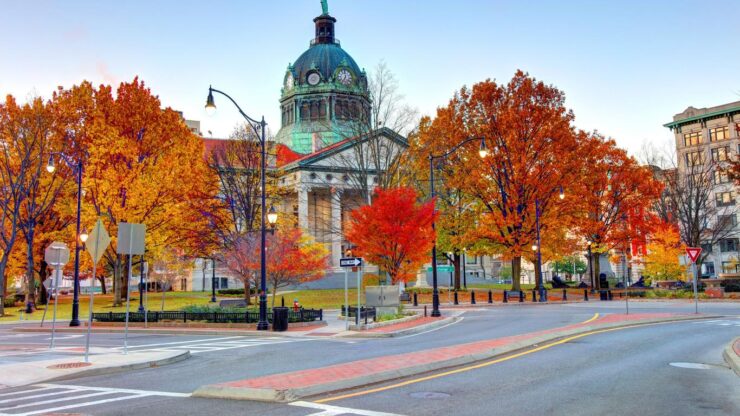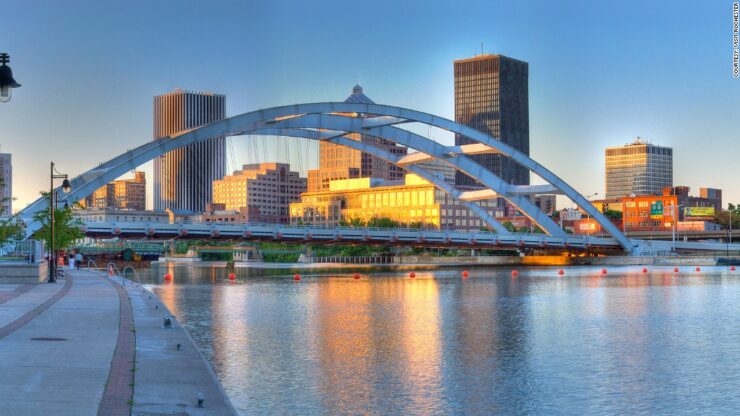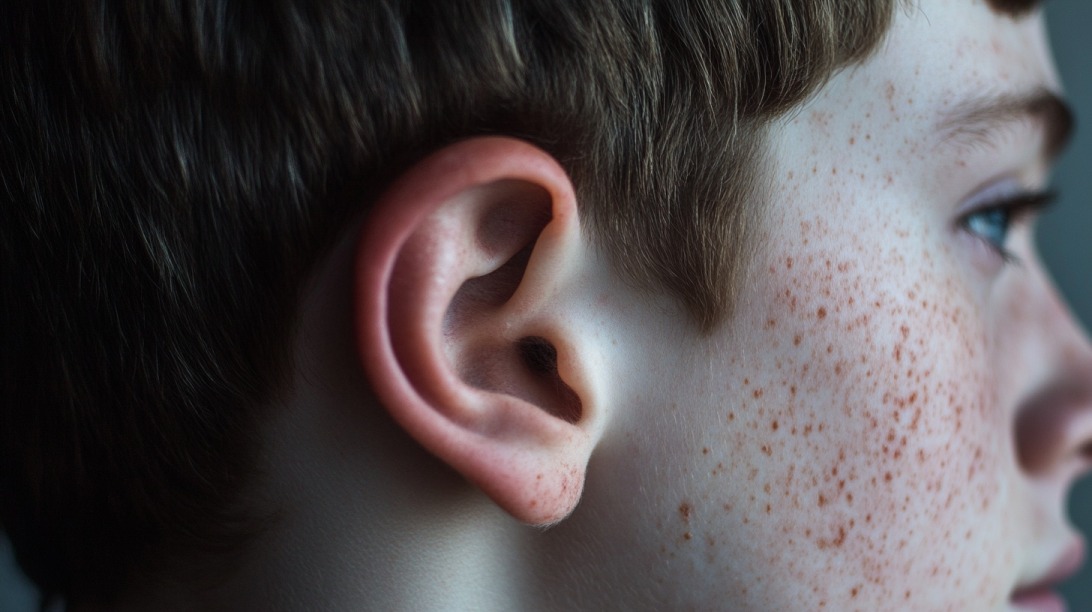New York State is renowned for its cultural riches, diverse neighborhoods, and bustling urban centers. Its cities are the pulse of the state, filled with life, color, and a certain grit that makes the Empire State so unique. However, not all that glitter is gold.
Despite the glamour and allure of some areas, others are steeped in socio-economic challenges that have unfortunately led to elevated crime rates. For residents and those considering moving into these vibrant yet complex urban landscapes, enhancing residential security can be a prudent step to safeguard against these risks.
This post will shine a spotlight on these most dangerous cities in New York, their specific challenges, and potential solutions to foster safer communities.
1. Niagara Falls
Niagara Falls, a city known worldwide for its majestic waterfalls and stunning natural beauty, unfortunately, tops our list. While the falls themselves draw millions of tourists each year, the city has long grappled with crime.
A significant economic downturn since the decline of its manufacturing industry has resulted in a high poverty rate, which has been linked to the city’s elevated crime rates. According to the FBI’s Uniform Crime Reporting (UCR) program, violent crimes, including robberies and aggravated assaults, remain a concern.
Although the city is working to revitalize its economy and tackle these issues, progress is slow, and Niagara Falls remains a city where caution is advised.
2. Binghamton
Tucked away in the Southern Tier of New York State, Binghamton, often touted as the Carousel Capital of the World, has seen better days. Once a thriving center for high-tech industry and manufacturing, the city has faced economic challenges due to job losses in these sectors.
The resulting socio-economic issues have created an environment where crime rates are high, with property crimes like burglary and larceny leading the pack. Binghamton authorities have been working tirelessly to combat these issues, investing in community programs and better law enforcement strategies.
3. Rochester
Rochester, home to the world-renowned Eastman Kodak and Xerox, has a rich history and a vibrant culture. However, this city also struggles with high crime rates. The most pressing issue is gun violence, which has spiked in recent years.
Community leaders and law enforcement have been working together to address this alarming trend through initiatives like the Gun Involved Violence Elimination (GIVE) initiative. Despite these efforts, Rochester’s crime rates remain a concern, making safety a top priority for those living in and visiting the city.
4. Buffalo
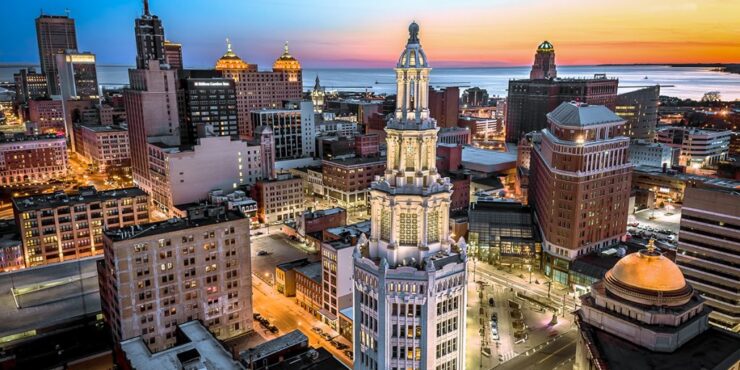
Buffalo, the second-largest city in New York State, is a city of contrasts. It boasts stunning architecture, a thriving arts scene, and the famous Buffalo Wings. However, it also contends with high crime rates.
The city’s East Side is particularly affected, with issues like drug trafficking contributing to a high incidence of violent crime. Local authorities have been striving to tackle this problem head-on, with efforts like the ‘Strike Force’ aimed at curbing gun violence, drug trafficking, and gang activities.
5. Albany
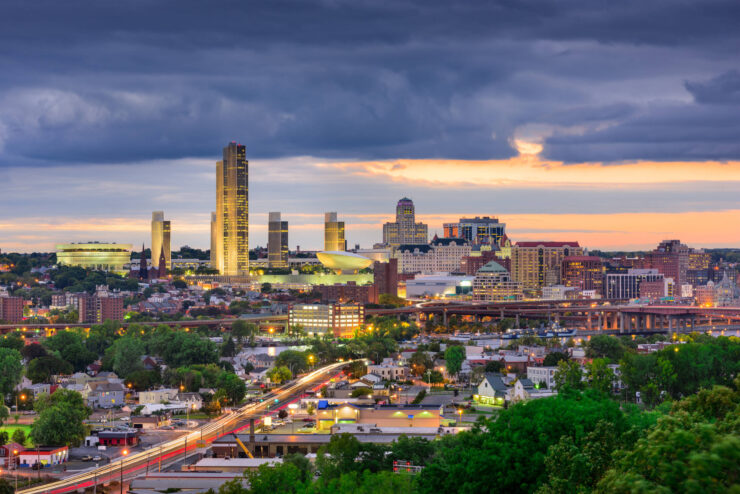
Albany, the state capital, holds a rich political history and scenic beauty. Yet, it’s not immune to crime. Although the overall crime rate has decreased in recent years, violent crimes, particularly shootings, remain a significant issue.
Efforts such as the Albany Cure Violence program, modeled after a successful Chicago initiative, aim to reduce gun violence by treating it as a public health issue, but challenges persist.
6. Troy
Located on the eastern bank of the Hudson River, Troy is a city rich in history and architecture. However, it also grapples with elevated crime rates. Known as the “Collar City” due to its history in shirt, collar, and cuff manufacturing, Troy faces challenges predominantly related to property crimes.
The local government has initiated various measures to combat this, including increased community policing and neighborhood watch groups. These efforts aim to foster trust and cooperation between law enforcement and residents, which is a critical step toward a safer city.
7. Syracuse
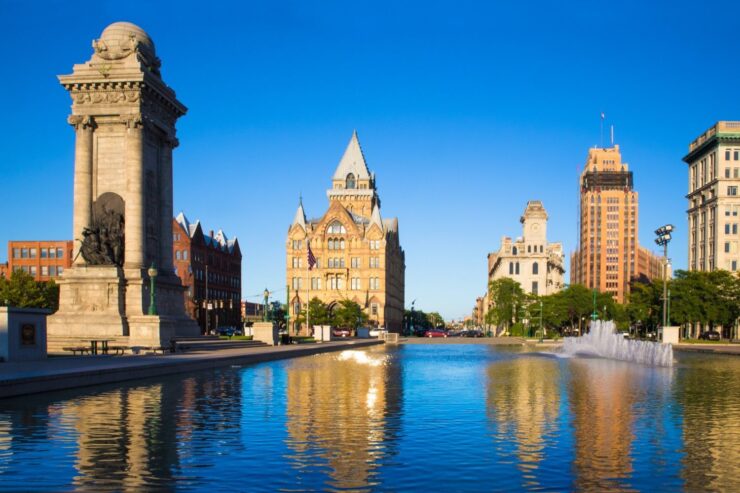
In the Central New York region lies Syracuse, known for its snowy winters and the prestigious Syracuse University. However, this city has also been marked by high crime rates, particularly violent crimes such as assault and robbery. Community initiatives like the Trauma Response Team, which provides support and resources to victims of violence, are at the forefront of Syracuse’s efforts to reduce crime and its impacts on the community.
8. Utica
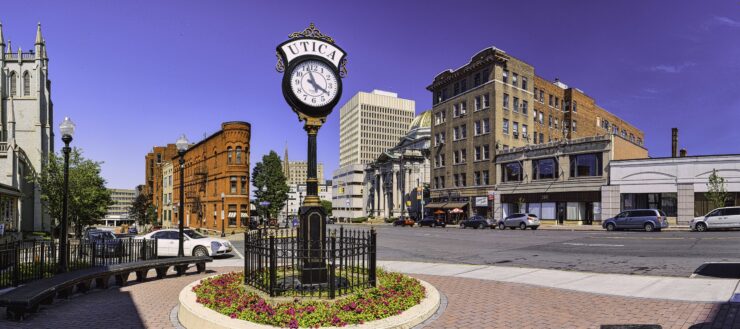
Utica, a city located in the Mohawk Valley, is renowned for its diverse cultural heritage. However, it too has been touched by the specter of crime, with issues such as burglary and theft being particularly prevalent.
Local organizations and law enforcement have been collaborating to implement crime prevention strategies and initiatives that tackle these issues, focusing on community engagement and increased police presence in high-crime areas.
9. Schenectady
Nestled in the eastern part of New York, Schenectady, often referred to as “the city that lights and hauls the world” due to its strong ties with General Electric and American Locomotive Company, is grappling with its own crime issues. The city has seen a high incidence of property crimes, including arson.
Efforts to counter these challenges are underway, with the local government investing in surveillance technology and community outreach programs.
10. Newburgh
Located in Orange County, Newburgh is a city with a rich history and striking architecture. However, it’s also a city with a high crime rate, particularly in terms of violent crimes.
The Newburgh Anti-Violence Task Force is one of the initiatives launched to address this issue, aiming to reduce gang violence and promote public safety through community-based strategies.
Socio-Economic Factors Contributing to High Crime Rates in New York State
Understanding the problem of high crime rates in New York State begins with an examination of the underlying socio-economic factors. Cities grappling with high crime rates often face significant economic challenges. The decline of manufacturing industries in cities like Niagara Falls and Binghamton has led to high unemployment rates and economic downturns. This, in turn, has resulted in increased poverty levels, a factor that is often directly linked to elevated crime rates.
The Impact of Substance Abuse and Gang Activity
Substance abuse and gang activity also play a significant role in contributing to high crime rates in New York. Cities like Buffalo, particularly its East Side, struggle with drug trafficking, which has led to a surge in violent crimes. Gang activities, often connected to the drug trade, exacerbate the situation further, making some neighborhoods particularly unsafe.
Education and Opportunity Deficits
Lack of access to quality education and opportunities for growth can also contribute to the problem. In cities like Syracuse and Utica, where violent crimes such as assault and robbery are prevalent, many young people face limited prospects for a better future. This can push them towards crime, either as a means of survival or due to the influence of their environment.
Gun Violence and Access to Firearms
Access to firearms is another significant factor that contributes to high crime rates. Cities like Rochester struggle with rampant gun violence, which has been on the rise in recent years. Loose gun control measures can make firearms easily accessible, contributing to a higher incidence of violent crimes.
Inadequate Community Engagement and Policing
Finally, a lack of community engagement and inadequate policing can also fuel crime rates. In cities such as Albany and Troy, despite various measures implemented to combat crime, the lack of active community involvement and effective law enforcement strategies can hinder progress. When communities and law enforcement agencies do not work together, it becomes challenging to create safer neighborhoods.
The Role of Community

Community engagement is essential in transforming these cities. Citizens have the power to make their communities safer by being involved, from participating in community watch groups to attending city council meetings and even advocating for better resources.
Beyond this, fostering a sense of community can lead to people looking out for each other and their neighborhoods, contributing to overall safety. Neighbors knowing neighbors, children playing in parks watched over by adults – these are the scenes we envision when we talk about safe communities.
Here are a few ways that individuals can contribute:
- Get Involved: Attend local government meetings and speak up about the issues that concern you. Your voice matters, and it can lead to action.
- Be Aware: Keep an eye out for suspicious activity in your neighborhood and report it to the authorities.
- Support Local Businesses: By supporting local businesses, you’re helping to stimulate the local economy, leading to job creation and community development.
- Mentorship: Consider mentoring a young person in your community. Your guidance could make a significant difference in their lives.
- Volunteer: Join local community organizations and volunteer your time. You’ll not only contribute to making your city safer but also get to know your neighbors better.
- Advocate: Speak out about the changes you want to see in your community. Whether it’s advocating for better schools, more job opportunities, or stricter gun control measures, your advocacy can lead to real change.
- Educate: Teach your children and those in your community about the importance of respecting others and their property. Education starts at home.
Buffalo Billion Initiative – New York’s Investment in Urban Renewal
One strategy being utilized to combat crime and improve the quality of life in these cities is urban renewal. Urban renewal involves redeveloping areas that are in a state of decay or disuse, with a focus on improving physical structures and infrastructure and in many cases, offering community support services.
Urban renewal can have a significant impact on crime rates by addressing the physical and social issues that contribute to crime. When neighborhoods are well-maintained and well-lit, and when they offer useful community amenities such as parks, recreational facilities, and community centers, they become less attractive to criminals and more attractive to families and businesses.
One example of urban renewal is the Buffalo Billion initiative. This state-funded program is designed to spur economic growth and job creation in Buffalo and the Western New York region.
It includes funding for workforce development, advanced manufacturing, and entrepreneurship. By creating jobs and stimulating the economy, programs like the Buffalo Billion can help address some of the root causes of crime.
ShotSpotter – Pinpointing Gunfire in Rochester
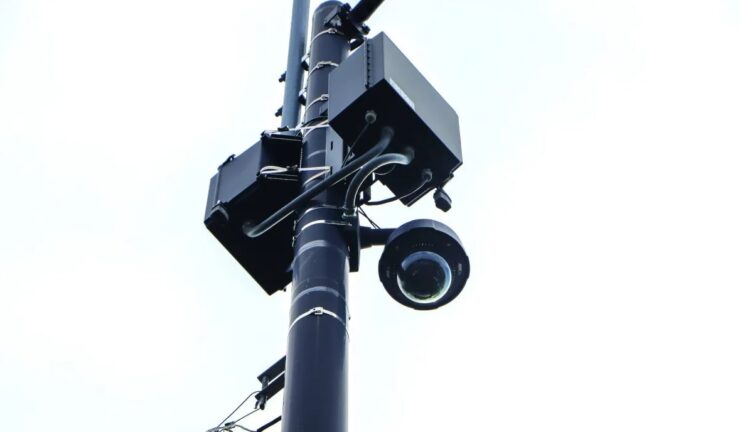
Technology is also playing a vital role in crime prevention in many cities. For instance, ShotSpotter, a gunshot detection technology, is used in cities like Rochester to pinpoint the location of gunfire. This technology helps law enforcement respond quickly to incidents of gun violence, potentially saving lives and deterring crime.
In addition, many cities are investing in surveillance cameras and predictive policing technology, which uses data analysis to predict where crimes are likely to occur. While these technologies raise valid privacy concerns that need to be carefully managed, they can also be powerful tools in the fight against crime.
Strengthening the Justice System – Albany County District Attorney’s Office
Finally, strengthening the justice system plays a crucial role in reducing crime. This includes not only ensuring that law enforcement is adequately funded and trained but also reforming the system to ensure that it is fair and equitable.
For instance, initiatives like the Conviction Integrity Unit in the Albany County District Attorney’s Office work to prevent, identify, and correct wrongful convictions. Such efforts help to build trust in the justice system, which can contribute to crime reduction by encouraging community cooperation with law enforcement.
Also, read our article about the most dangerous cities in the US based on available data, including crime rates, types of crime, and factors contributing to these crime levels.
Frequently Asked Questions

1. What is the most dangerous city in New York State?
Niagara Falls is currently considered the most dangerous city in New York State. Despite its global reputation for stunning natural beauty, the city has struggled with a high crime rate, largely due to an economic downturn and high poverty rates following the decline of the manufacturing industry.
2. Which cities in New York State have the highest crime rates?
According to the latest statistics, the cities with the highest crime rates in New York State include Niagara Falls, Binghamton, Rochester, Buffalo, Albany, Troy, Syracuse, Utica, Schenectady, and Newburgh.
3. What are the most common crimes in these cities?
The types of crime vary by city. Niagara Falls and Rochester, for instance, have a high rate of violent crimes, including robberies and aggravated assaults. Cities like Binghamton, Troy, Schenectady, and Utica struggle more with property crimes such as burglary and larceny. In Buffalo and Newburgh, drug trafficking and related violent crimes are significant issues.
4. What is the “Buffalo Billion” initiative?
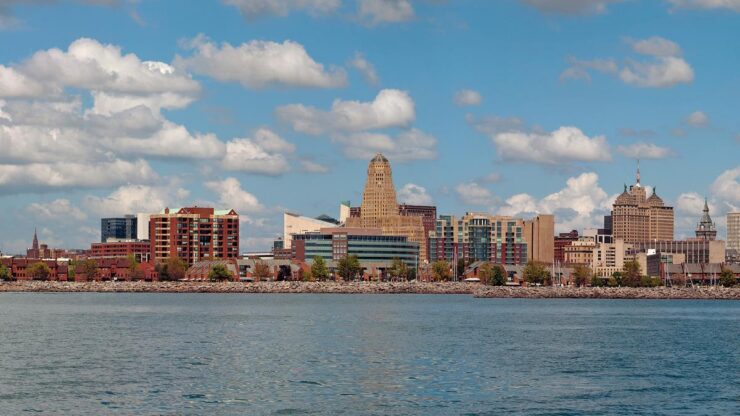
The Buffalo Billion initiative is a state-funded urban renewal program designed to stimulate economic growth and job creation in Buffalo and the Western New York region. The initiative includes funding for workforce development, advanced manufacturing, and entrepreneurship. By revitalizing the local economy, the program aims to address the root causes of crime, such as poverty and lack of job opportunities.
5. How is technology being used to combat crime in these cities?
Many cities are using technology to aid in crime prevention and response. For example, Rochester uses ShotSpotter, a gunshot detection technology, to identify the location of gunfire. This allows law enforcement to respond quickly to incidents of gun violence. Other cities are investing in surveillance cameras and predictive policing technology, which uses data analysis to predict where crimes are likely to occur.
6. Which neighborhood in Buffalo has the highest crime rate?
The East Side of Buffalo is particularly affected by high crime rates. Issues like drug trafficking contribute to a high incidence of violent crime in this area.
7. What are some strategies being used to reduce crime rates in these cities?
Strategies for reducing crime rates include community policing, social intervention programs, economic revitalization, substance abuse treatment, and stricter gun control measures. Many cities are also focusing on improving education and community engagement to help reduce crime rates.
8. What is the role of the community in reducing crime rates?
Community engagement is crucial in reducing crime rates. This can involve participating in community watch groups, attending city council meetings, advocating for better resources, and supporting local businesses. Mentorship, volunteering, and educating children about respect and the importance of community can also contribute to safer cities.
9. How is the justice system being strengthened to reduce crime?
Strengthening the justice system is another strategy being used to reduce crime. This involves ensuring that law enforcement is adequately funded and trained, as well as reforming the system to make it more fair and equitable. Some cities have initiatives like the Conviction Integrity Unit in the Albany County District Attorney’s Office, which works to prevent, identify, and correct wrongful convictions.
10. What is the “Gun Involved Violence Elimination (GIVE)” initiative?
The GIVE initiative is a program in Rochester aimed at reducing gun violence. It involves community leaders and law enforcement working together to address the issue of gun violence, which has been a significant concern in recent years.
Final Words
Although the cities mentioned above have been labeled as ‘dangerous,’ it’s important to note that they are much more than their crime rates. These cities are rich in history, culture, and community spirit.
They are cities of resilience, fighting against the odds to create a safer, brighter future for their residents. Remember, understanding is the first step to change. By shedding light on the challenges these cities face, we can begin to address the underlying issues and help these cities rise once more.
The Empire State is known for its ability to bounce back stronger, and there’s no reason why these cities can’t do the same. With the right attention, understanding, and effort, we can transform these ‘most dangerous cities’ into safer, thriving communities – because every New Yorker deserves to live in a place where they feel safe and secure.

